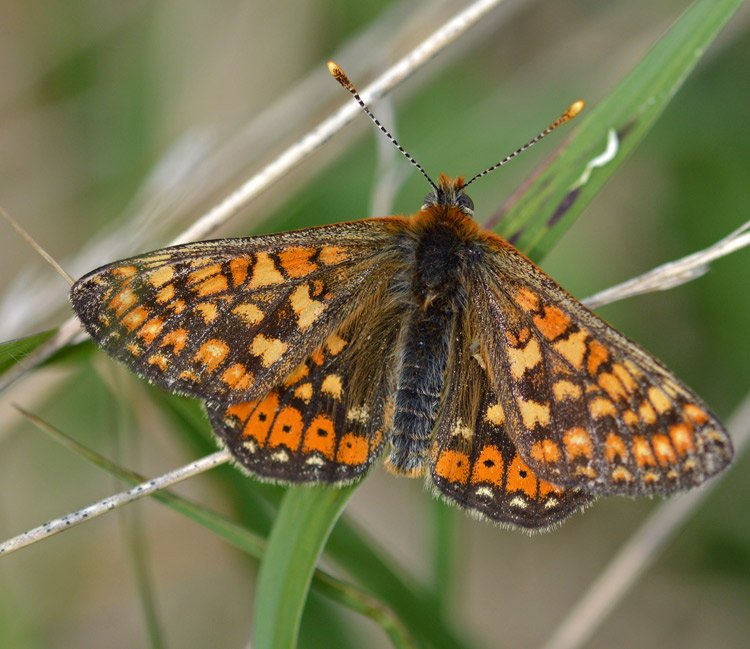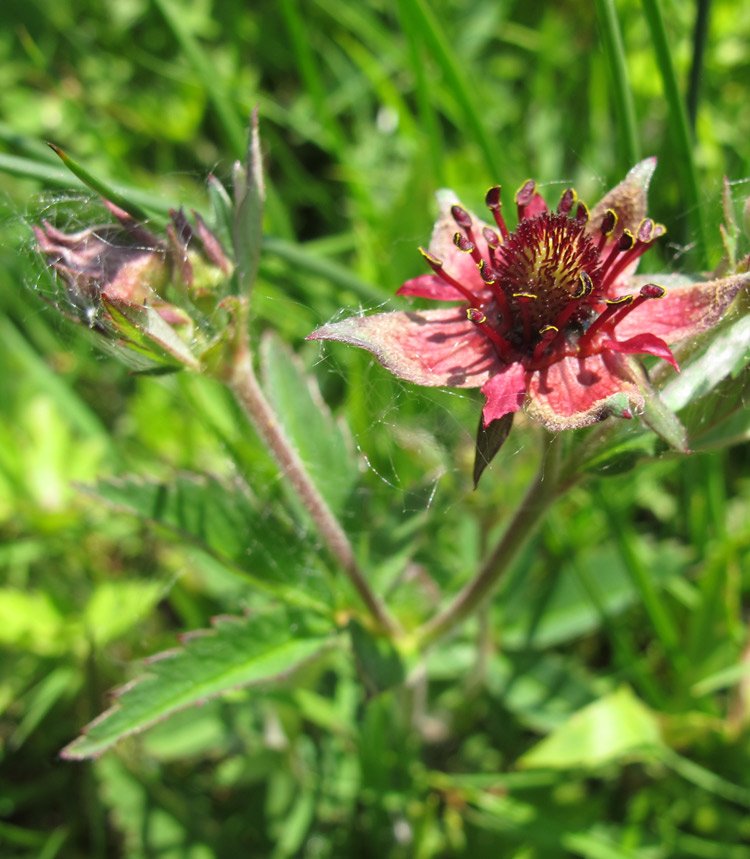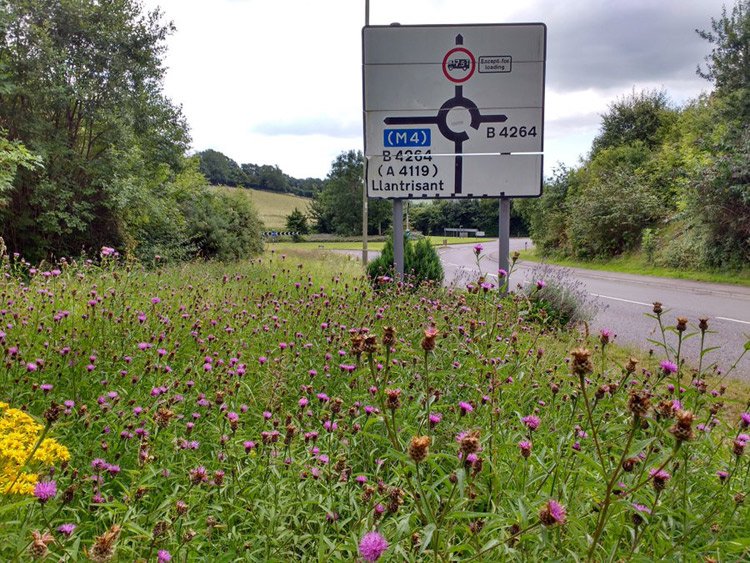RCT contains a wealth of habitats, with many special places that you can visit to walk amongst wildlife.
Internationally important communities of rhos pasture flower in summer with devil’s-bit scabious, meadow thistle and heath spotted orchid and host precious colonies of marsh fritillary and small pearl-bordered fritillary butterflies. Pay a visit to Llantrisant Common in summer to see for yourself.
We are very lucky in Rhondda Cynon Taf to still have a superb grassland heritage, which is a vibrant part of our biodiversity fabric. Pastures and road verges are places where flower rich displays of birds-foot trefoil, black knapweed, ox-eye daisy, common spotted orchid rough hawkbit and red clover thrive: in which common blue butterflies, mother shipton moths, grasshoppers and countless bees flit, hum and buzz.
The dry grasslands of the upper valleys slopes are more acidic but just as beautiful with heath bedstraw, tormentil, greater burnet, bluebell and sheep sorrel, while on the limestone there are cowslips and bee orchids. In the autumn, on a bright sunny morning visit and look for another indicator of biodiversity wealth, the reds, oranges, yellows and purples of wax cap fungi.
From any bus stop in Pontypridd, or Porth, or Aberdare or Mountain Ash look up at the varied habitats which forms the valley side ffridd. A complex mixture of acid grassland, heath, bracken, woodland, scrub and flushes runs for mile on mile along our main valleys: interconnected in an ever-changing intricate habitat mosaic.
Coal tips are proving particularly important for their lichen-heath communities in which heathland grows amongst white, encrusted mats of cladonia lichens. Recent work has confirmed how important these tips are as invertebrate habitat: survey work on 5 RCT Tips has recorded 85 bee species (including scare and rare species), this is half the known Welsh bee fauna and a third of the UK list. Dare Valley Country Park offers a glimpse into this amazing habitat.
Ancient upland oak wood such as Glyncornel LNR where stunted welsh oaks cling to the valleyside, have a carpeted groundflora of wimberry, heather, ferns, mosses and exposed slabs of pennant sandstone, with their lichen rich bedding planes. These sheep grazed woods are home to classic Welsh woodland songbirds: redstart, wood warbler and tree pipit.
In the valleys bottoms, the Taff Trail winds its way through pockets of mixed deciduous woodlands supports oak, ash, sycamore and wych elm with alder and willow on wetter ground.
Elusive dormice find a home in the hedgerows of hazel, oak, ash, hawthorn, sallow, blackthorn, rose, dogwood, spindle and holly, and through this network of hedgerows our remnant ancient woodlands stay connected and viable.
In the twilight, look out for bats. RCT supports at least 13 species of bats, including rare things like barbastrelle and lesser horseshoe’s. On the other end of the scale, Pontypridd is known by bat surveyors as ‘Pip City’, an affectionate reference to the abundance of common and soprano pipistrelle bats living in the town.
Certain habitats can be ‘traced back’ to the retreat of the last ice sheet 8,000 years ago. Much of our peatbog habitat started to form at that time, as glacial lakes, hollows and upland plateaus gradually succeeded through fens, and swamp into peat. These quaking, shaking wonders are home to cranberry, sundews and bog asphodel which flower amongst the sphagnum peat-mosses and the tussocks of moor-grass and deer grass. TheLost Peatlands Project will provide opportunities to visit these amazing habitats.
In the years to come there is the prospect to recover hundreds of hectares of upland peat bog, swaying in the summer breeze with hundreds of thousands of cotton-grass heads, holding atmospheric carbon, and naturally storing and controlling upland storm water to provide the ‘greenest of green’ flood protection for the Valley communities below. While you are there, make sure to dip into a forestry plantation edge where siskin and crossbill abound, club-mosses shelter, heronries sway in western hemlocks and at summer dusks, nightjars ‘churr’.
Rivers which forty years ago were dead and lifeless are now healthy, biodiverse watercourses, home to multitudes of stone and mayflies, dipper, grey wagtail, brown trout and, of course, otter. Their associated floodplain marshes, meadows and neighbouring wetlands are great places to spot dragonflies. WTSWW Pwll Waun Cynon Nature Reserve (PDF) is a good example of floodplain meadow in the county.
The most southerly glacial cwms in the UK are home to peregrine falcons and stranded artic alpine plants – flowers and ferns, which cling to the coolest, shadiest ledges and wait in hope for tundra summers to return. Explore with Welcome to our Woods.
Where industry has been cleared, experience some ‘brownfield’ biodiversity. Post-industrial sites often support amazing mosaics of grassland, wetland and woodland habitats all naturally developed on apparently derelict land. These eclectic mixtures of habitats hold many a biodiversity surprise and a home to newts, frogs, dingy skipper butterflies and red-belted clearwing moths. Visit have Dare Valley Country Park which has both original Victorian Tips and species rich 1970 reclamation spoil






